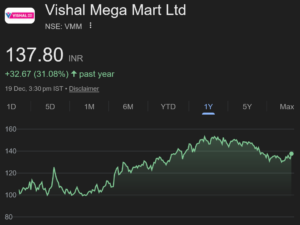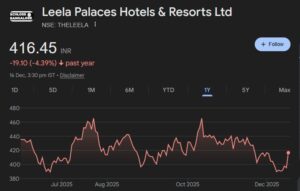
Why Dividend Yield strategy is so popular:

V. K. Sharma, in his article “How to select a Dividend Yield Stock?“, explains that dividend yield strategy is an evergreen strategy for all seasons because:
1. the investor gets a steady income by way of dividends;
2. the dividend is tax free in the investor’s hands;
3. as the companies that pay dividends are good companies with strong business models, there is also a chance of capital appreciation by way of increase in stock prices.
How to select a good dividend yield stock:
V. K. Sharma explains that before deciding on a good dividend yield stock, investors should ensure that the following is in place:
1. the company has a consistency track record of declaring dividends over the past 5 years;
2. the dividends are being paid out of operating profits and not out of exceptional income;
3. the company has the ability to pay dividends of the same quantum in the foreseeable future;
4. the company has a robust business model and there are chances of capital appreciation in the future.
Dividend Yield strategy for the present:
V. K. Sharma points out that the stock market is at a critical juncture at the moment. The stock market is just 5.5% away from making new high. On the other hand, if it slumps 14.5%, it will fall into bear market territory.
In this situation, V. K. Sharma suggests two strategies to get the best out of high dividend yield stocks.
The first strategy is to buy slowly and steadily and to average the price in case it comes lower. For example, a stock quoting at Rs 113 with a dividend payout of Rs 5 per share offers a dividend yield of 4.4%. If the price of the stock falls to Rs 100, the investor should buy more because the dividend yield then rises to 5%. V. K. Sharma that instead of buying in one go, it is always better to buy in a staggered manner.
The second strategy suggested by V. K. Sharma is that investors should buy and sell stocks in a manner that gives them dividend for two financial years. Most companies close their accounts on 31st March and payout the dividend by July of that year. So if you buy the stock just before July 2013, you will get Rs 5 as dividend in July 2013. If you hold on for another 12 months, you will get another dividend of Rs 5 per share in July 2014. So, in a period of 13 months, you get tax free income of Rs 10 per share, resulting in an absolute yield of 8.84% for 13 months and an annualised yield of 8.16% p.a.
Best High Dividend Yield Stocks To Buy Now:
On the most important issue of which high dividend yield stock to buy, V. K. Sharma has recommended on two top quality PSU stocks, Dena Bank and GIC Housing Finance.
|
|
Dividend Rs. |
Divi Payout % |
|
Div. |
|
|
|
Stocks |
2013 |
FY13 |
Price |
Yield |
P/E |
P/BV |
|
DENA BANK |
4.7 |
21.0 |
84 |
5.6% |
3.76 |
0.5 |
|
GIC HSG |
5.0 |
31.7 |
113 |
4.4% |
7.16 |
1.1 |
In FY 2012-13, Dena Bank has proposed Rs 4.7 per share as dividend which, at the CMP of Rs 84, works out to a yield of 5.6%. Dena Bank has a track record of regularly paying dividends since 2007 and has been continuously hiking its dividend each year. Its’ Net Interest Income has grown at a CAGR of 17.6% for the last five years and the stock is now available at an attractive valuation of just 0.5 times its book value.
Dena Bank’s stock price got pummeled in FY 2012-13 because its net NPA is high at 1.39% and it has a huge exposure (16%) to companies in the beleaguered power sector. However, V. K. Sharma expresses confidence that this will not come in the way of Dena Bank continuing to pay higher dividends going forward. He points out that while Dena Bank hiked the dividend to 47% this year from last year’s 30%, the pay-out ratio is still low at 21%. The highest pay-out ratio seen amongst PSU Banks this year is 50.8%. This means that there is enough room for Dena Bank to maintain the dividends if not hike them.
The second stock pick, GIC Housing, has proposed a dividend of Rs 5 per share which is higher from last year’s Rs 4.5 and results in a dividend yield of 4.4%. GIC Housing has been paying dividends continuously from 1993. The best part is that despite paying a higher dividend, the pay-out ratio has reduced from 44.7% last year to 31.7% this year.
V. K. Sharma also points out that both stocks have a good business model and one can expect good capital appreciation from these stocks as well.
Exit strategy for high dividend yield stocks:
V. K. Sharma suggests that even if one is comfortable holding stocks for a long term, it pays to have an exit strategy in place. He suggests that as a thumb-rule, if the stock gives a capital appreciation which is five times its dividend yield, profits must be booked. He also suggests that if the ex-dividend price rises quickly compared to the cum-dividend price, profits should be booked.






deena bank does not deservie to be in high dividend yield stock
fundamentally
the fact that since 2007 it is a regular payer with enhanced dividend does not get it into this place fundamentally
gic better option
highest dividend payer co
what should be the strategy to get the dividend, i.e. when to buy the stock, so we become eligible for getting the dividend and thereafter exit the stocks.
pls. advise.
Pl see the insights provided by V. K. Sharma of HDFC Securities on the best dividend investing strategy to be followed. Keep a look out for the record date. If you buy before the record date, you become eligible for the dividend. The share will quote ex-dividend after the record date and you can sell it thereafter if you want.
Dear v.k
dividend paying stocks are not always good this market is concern with capital gain only as far as my knowledge is concern this is capital market not interest earning market
There is so many stocks which can give huge return in Bull ya bare run (teji ho ya mandi) there is 100 % risk in this market and 10000% earning opportunity
“Wish U Happy new year”
LALIT SHAH
MARVELLOUS RESEARCH
Is dividend paying stocks are good ??